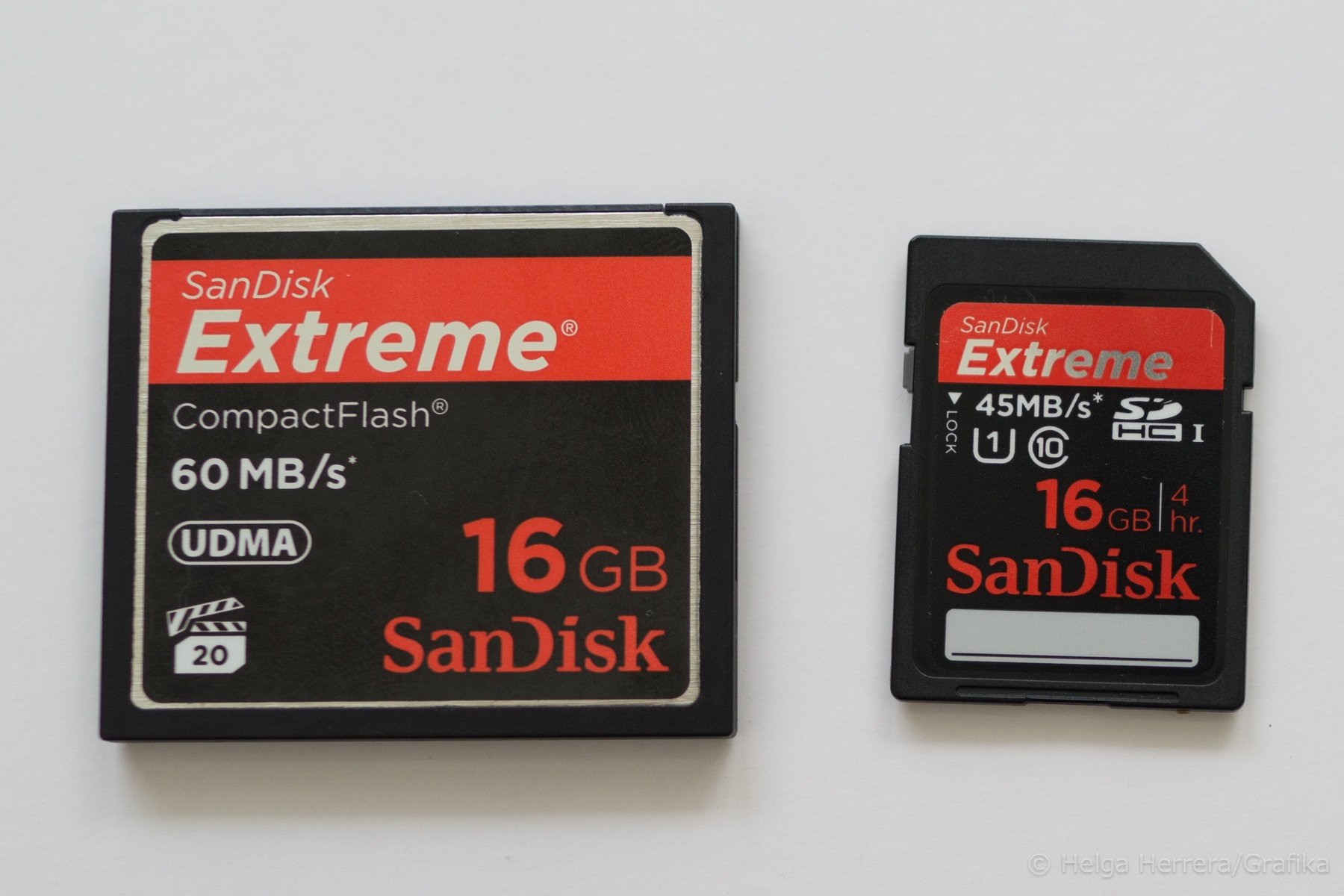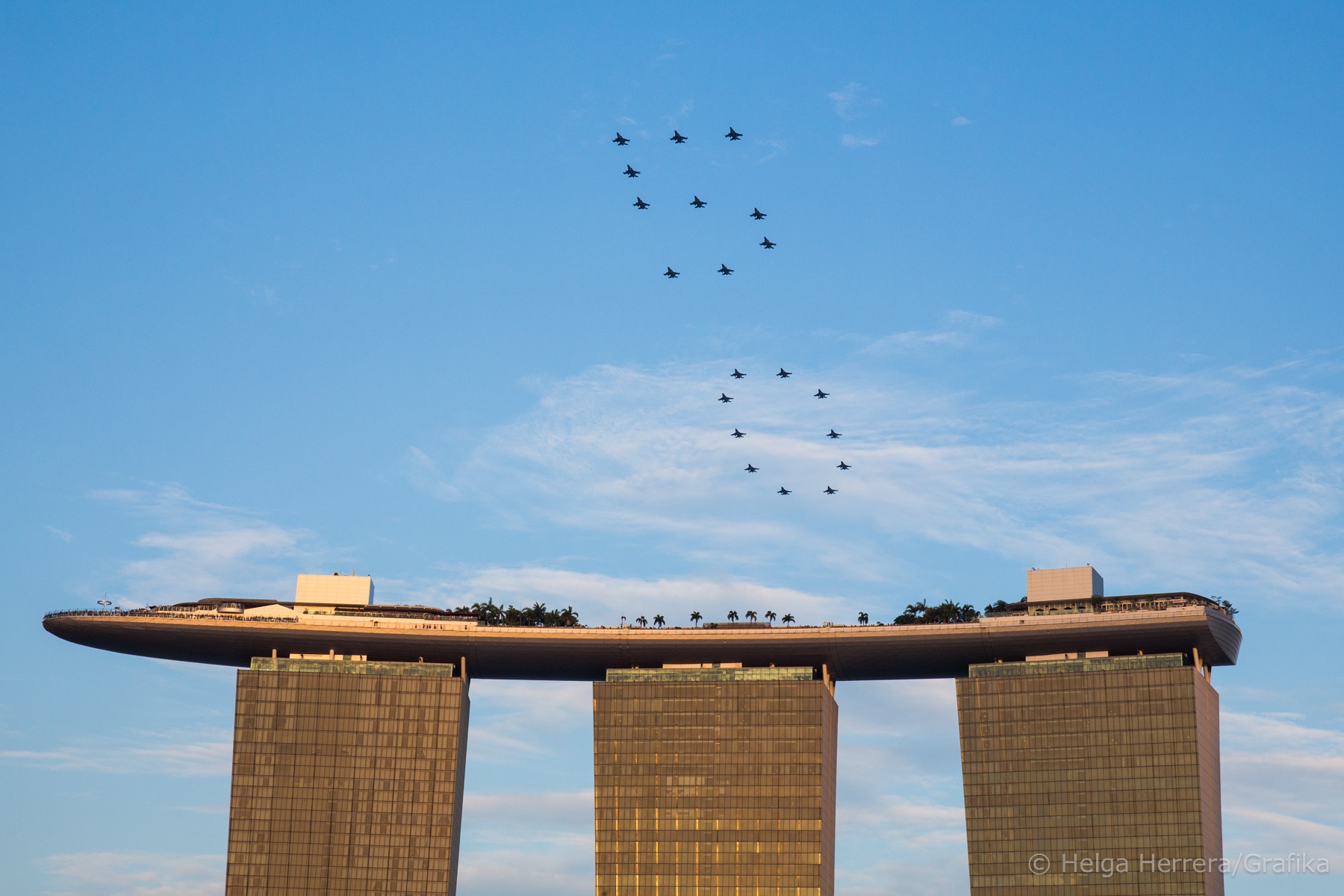Understanding Memory Cards: Which One Is Right For You
 Contributed by
Helga Herrera
August 27, 2015
Contributed by
Helga Herrera
August 27, 2015

Which memory card is the best for photography?
There are different brands and card types in the market and sometimes it is overwhelming. Prices vary significantly as well, so make sure to pick the right one.
Type of Memory Cards
Check your camera manual and find out what type of memory card is supported by your camera, most cameras use SD (Secure Digital) or CF (Compact Flash) memories. Cameras may support both or just one of them. For example:
- CANON EOS 5D Mark II, has two card slots, one for and SD and one for a CF card.
- CANON EOS 5D Mark I, has one card slot for a CF card.
- SONY RX1R (mirrorless), has one card slot for an SD card.

SD cards are significantly cheaper than CF cards, so I use them whenever possible.
As cameras get smaller and smaller, SD cards are becoming more popular, since SD cards are a lot smaller and thinner than CF cards. In the case of SD cards, there are the standard size ones, the mini and the micro. They get really tiny to fit in small devices. But regardless of the type of memory card that you use (over which in most cases you have no control), there are a few things that you should understand.
1. Capacity
- SDSC (Secure Digital Standard Capacity) – 1 MB to 4 GB – These are basically first generation SD cards. Due to its limited storage capacity, they are less and less popular.
- SDHC (Secure Digital High Capacity) – 4 GB to 32 GB – They are physically identical to SDSC cards, but have a much larger storage capacity.
- SDXC (Secure Digital eXtended Capacity) – 32 GB to 2 TB – Huge storage capacity, perfect for video, but can also be used for photography.
2. Speed Class Rating indicate minimum performance, related to speed processing data. The writing speed determines how many frames/second an SD can write and ultimately how many frames/second you can shoot. This is extremely important when photographing sports or fast moving objects. Check your camera’s manual and see how many frames/second it can shoot and make sure you have an SD card that allows it.
Read and write speeds have to exceed the values shown below in order to be able to use the following ratings. Check the number inside a circle or letter “C” on the label.
- Class 2 – Writing Speed 2 MB/s or higher
- Class 4 – Writing Speed 4 MB/s or higher
- Class 6 – Writing Speed 6 MB/s or higher
- Class 10 – Writing Speed 10 MB/s or higher
- UHS Speed Class 1 (U1) – for real time broadcast and HD video
- UHS Speed Class 3 (U2) – for video files

3. Reading speed is the value shown on the card, e.g. 30 MB/s. The higher the value, the faster the photos will be downloaded. Normally, I use SDHC cards, class 10, 16GB, 45 MB/s.
I don’t use big capacity memory cards, minimizing the risk of losing pictures to 16 GB (about 500 raw files). When the capacity of the memory is higher, I tend to use it for longer, and if anything happens to the memory, I could lose an entire project. Of course there are some additional safety precautions you can take, but this is an easy one.
Talking about security, SD cards have a security switch that prevents you from accidentally overwriting it, using it when needed. SD cards are very thin and fragile, make sure to store them in a safe and dry place.
Fake SD Cards
Finally, if you notice that your memory card is very slow storing your photos or if it gets full with a few photos, it might be a fake memory. SDSC, SDHC and SDXC are physically identical, it is very easy to change labels and sell an SDSC, Class 2, 4GB for an SDHC or SDXC, or even if it is a real SDHC to change the capacity from 8 GB to 32 GB. Buy the memories only from trusted suppliers.
Visit Grafika Photography and Design page to find out more about Helga's work.
Did you enjoy this post? Please comment, like and share!












Sorry, the comment form is closed at this time.